|
1934 - A new name, a new beginning
During 1933, beginning on 7 May, Myles Bickerton began to learn to fly at Hanworth using the Aero Club's dH.60 Moths. He made his first solo on 7 June in the aircraft he had purchased, de Havilland dH.60G Gipsy Moth G-ABAG. On 24 June 1933, Myles flew his Moth into a field he had selected near his country home in Denham and made the first landing at the new site. Four more flights followed into October, as he assured himself that the area was suitable for aviation. Having done so, he purchased the field, which was part of the Marish Farm estate, in February 1934 and began basing his aircraft there almost immediately. Myles decided on a new name for the location, initially christening the aerodrome Hawksridge. This is thought to have been due to the presence of a variety of birds of prey around the site, a presence that continues to this day with kestrels, peregrine falcons, buzzards and red kites living around the airfield in abundance. Throughout the summer of 1934, as flying continued, the area was improved, with fences secured and a sign erected with the new name. A number of obstructions, rocks and tree stumps and the like, were removed and the land was rolled to make the smoothest possible grass surface.
|
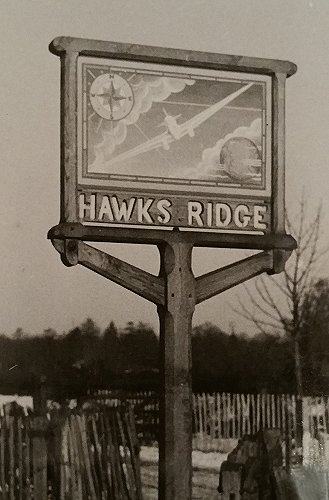
The aerodrome site at Denham was initially named Hawksridge.
|
The aircraft Myles had purchased, G-ABAG, had a fascinating history even that early in its career. Built at Stag Lane as Construction No 1259 on 23 June 1930, it had been purchased by Bentley Motors Ltd and based at Heston, where it was flown by amongst others, Amy Johnson. It was privately purchased by T C Fawcette, who moved the aircraft to Cramlington, and used it to enter the Kings Cup Air Race in 1931, before selling the aircraft to the British and Dominion Film Corporation Ltd.
|
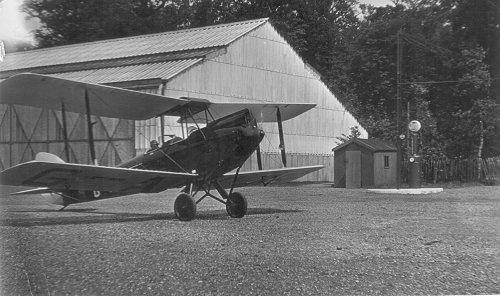
G-ABAG was purchased by Myles Bickerton at Hanworth in 1933.
|
The film company was based near Feltham and flew the aircraft from a small field there, using it as a camera platform on several flights over London and the South East. It was then sold to M Findley, who continued to fly from Feltham, often visiting Hanworth, where Myles Bickerton was learning to fly. In 1933, Myles purchased the aircraft for the princely sum of £450, initially basing it at Hanworth. He was to fly around 100 hours in the Moth, keeping good care of it as his purchases of new wheels and a new propeller attest.
|
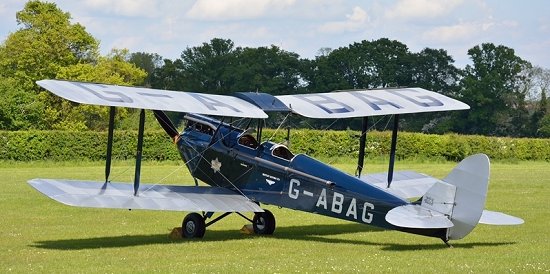
de Haviland Gipsy Moth G-ABAG as it appears today, resplendent on the grass airfield at Old Warden.
|
With the aerodrome established at Hawksridge, Myles moved the aircraft from Hanworth to its new home, returning to Hanworth for maintenance or when he was unable to fly for long periods due to his work when hangarage for the aircraft would be required. He made many flights from Hawksridge in 1934, including cross country flights to Liverpool to visit his family and local flights for his three children to give them air experience.
|
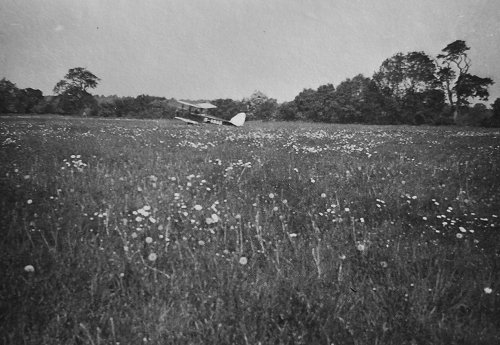
de Haviland Gipsy Moth G-ABAG on the grass at Hawksridge, Denham, on one of the early test flights by Myles Bickerton into the new airfield in 1934.
|
At that time, the AA was heavily involved in general aviation, having their own air wing and producing one of the first regularly updated guide to the airfields of the UK as an aid to pilots. This included information about landing distances, hazards and facilities available at each aerodrome, as well as location and detail maps. These were the forerunner of today's modern flight guides published around the world, Denham first appearing in the AA Register of Landing Grounds in 1934. On 2 September 1934 Myles sold G-ABAG to H W Moore, who had been one of his instructors at Hanworth. Moore paid £325 for G-ABAG, which means Myles had owned the aircraft for some 18 months and flown just over 100 hours in it. Moore allowed Myles to continue flying the Moth for the next month until his new aircraft was delivered. Interestingly, G-ABAG was to be purchased by two more private owners after Moore, eventually being acquired by the Shuttleworth Trust where, restored to immaculate condition, it still flies today.
|
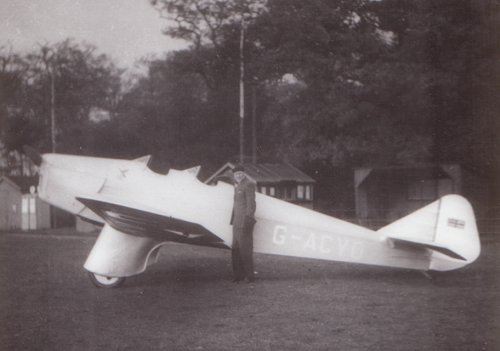
Myles Bickerton with his brand new Miles M.2F Hawk Major, G-ACYO.
|
Myles decision to sell G-ABAG was because he had been looking for a faster and more modern aircraft, eventually deciding on a Miles M.2F Hawk Major two seat monoplane trainer as the type of choice. The aircraft was powered by a 200hp de Havilland Gipsy Major engine, giving it a maximum speed of 150 mph, a marked improvement over the earlier Moth.
|
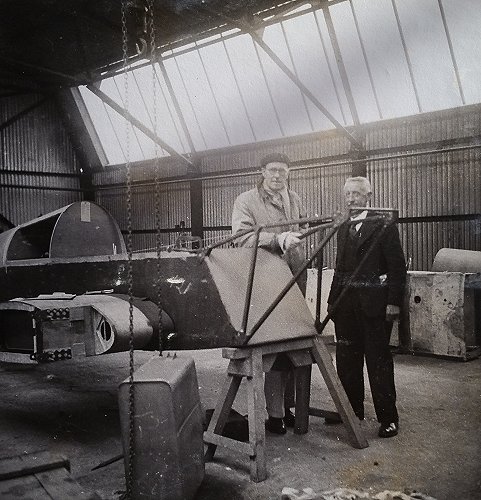
Myles Bickerton with Mr Hull, the Works Manager at Woodley, examining his M.2F Hawk Major under construction.
|
Myles placed an order for a brand new aircraft with Phillips and Powis Aircraft, manufacturers of Miles types, in August 1934, his aircraft, constructor's number 121, G-ACYO, being flight tested at the end of September. On 6 October 1934 Myles and H W Moore went to the factory at Woodley near Reading, and flew the aircraft back to Hawksridge.
|
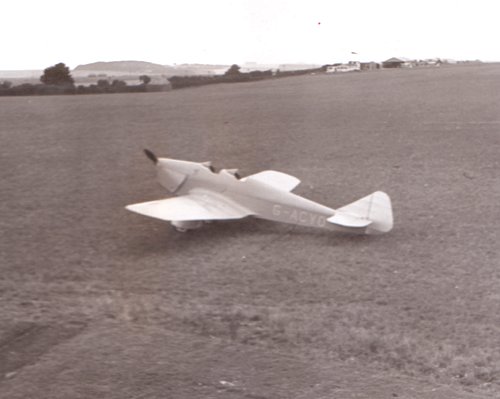
Myles Bickerton was to fly G-ACYO extensively for five years, touring the airfields of the country and entering air races. Here the aircraft is seen at Salisbury
|
With Myles wishing to base G-ACYO at Denham permanently, the need for a hangar at the site became urgent. Plans were drawn up for a hangar capable of housing several aircraft, as interest in basing other aircraft there had been expressed by a number of owners. Planning permission was applied for and this would be the next step in developing the Hawksridge site as will be related next.
|
|

